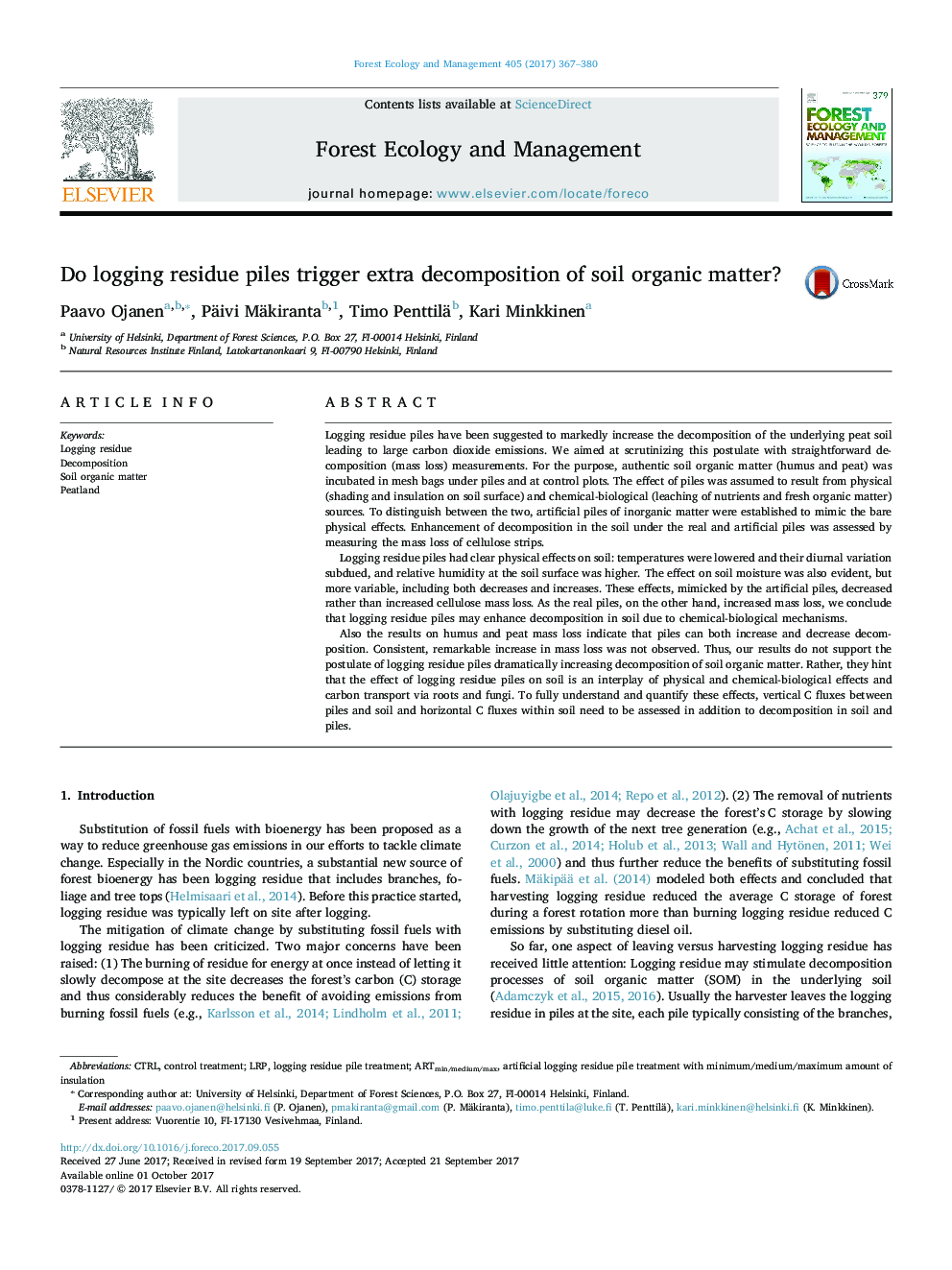| Article ID | Journal | Published Year | Pages | File Type |
|---|---|---|---|---|
| 6459117 | Forest Ecology and Management | 2017 | 14 Pages |
â¢Logging residue piles lowered soil temperature and subdued its diurnal variation.â¢Relative humidity was higher and also soil moisture was altered under the piles.â¢These physical effects of piles rather decreased than increased decomposition.â¢Chemical-biological effects (priming) on the other hand increased decomposition.â¢No remarkable increase in mass loss of peat and humus was observed.
Logging residue piles have been suggested to markedly increase the decomposition of the underlying peat soil leading to large carbon dioxide emissions. We aimed at scrutinizing this postulate with straightforward decomposition (mass loss) measurements. For the purpose, authentic soil organic matter (humus and peat) was incubated in mesh bags under piles and at control plots. The effect of piles was assumed to result from physical (shading and insulation on soil surface) and chemical-biological (leaching of nutrients and fresh organic matter) sources. To distinguish between the two, artificial piles of inorganic matter were established to mimic the bare physical effects. Enhancement of decomposition in the soil under the real and artificial piles was assessed by measuring the mass loss of cellulose strips.Logging residue piles had clear physical effects on soil: temperatures were lowered and their diurnal variation subdued, and relative humidity at the soil surface was higher. The effect on soil moisture was also evident, but more variable, including both decreases and increases. These effects, mimicked by the artificial piles, decreased rather than increased cellulose mass loss. As the real piles, on the other hand, increased mass loss, we conclude that logging residue piles may enhance decomposition in soil due to chemical-biological mechanisms.Also the results on humus and peat mass loss indicate that piles can both increase and decrease decomposition. Consistent, remarkable increase in mass loss was not observed. Thus, our results do not support the postulate of logging residue piles dramatically increasing decomposition of soil organic matter. Rather, they hint that the effect of logging residue piles on soil is an interplay of physical and chemical-biological effects and carbon transport via roots and fungi. To fully understand and quantify these effects, vertical C fluxes between piles and soil and horizontal C fluxes within soil need to be assessed in addition to decomposition in soil and piles.
